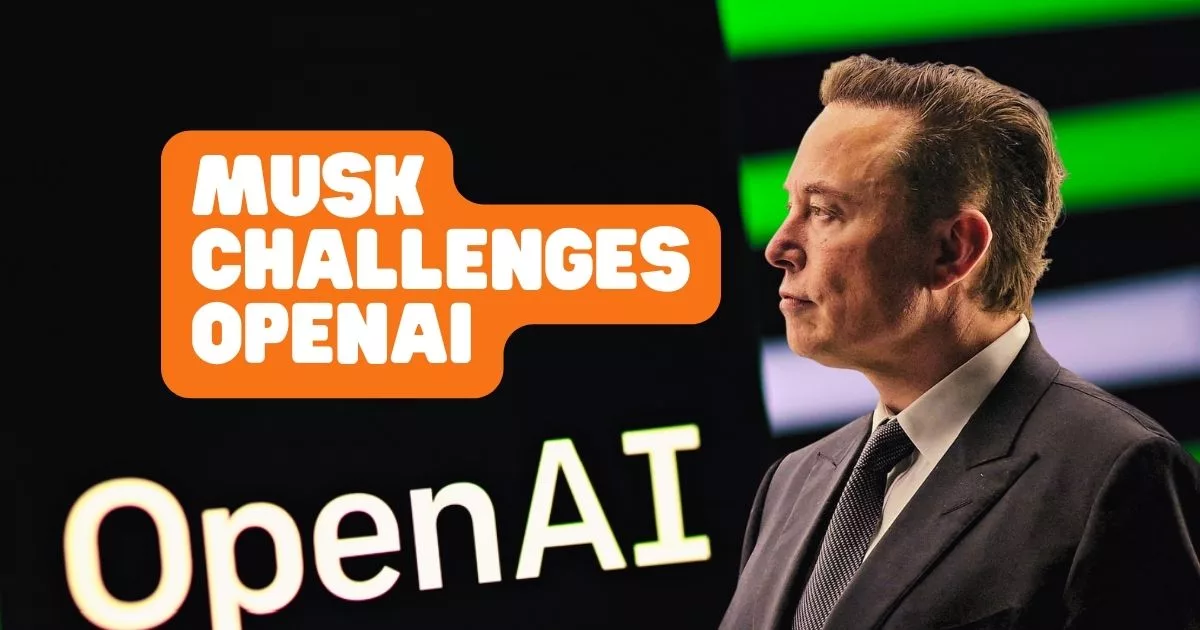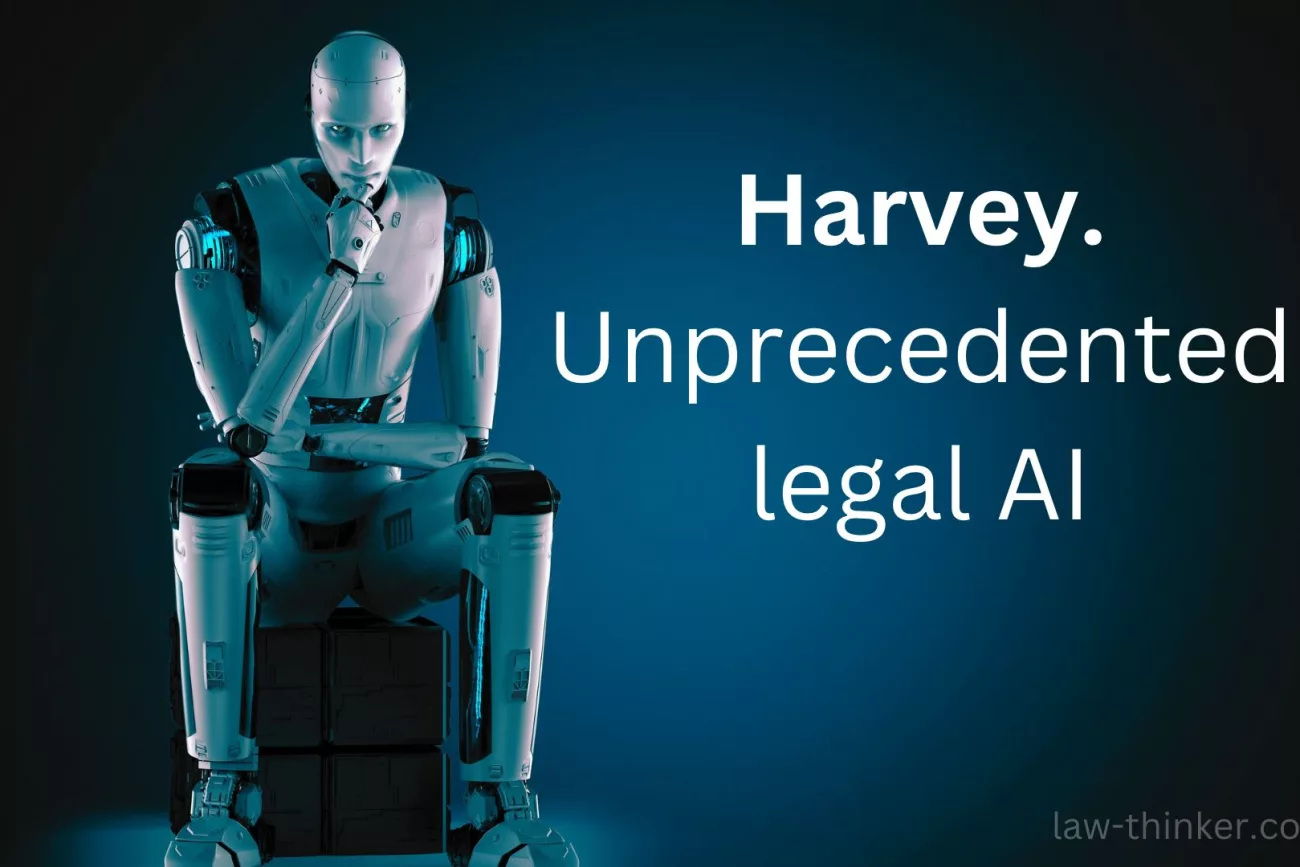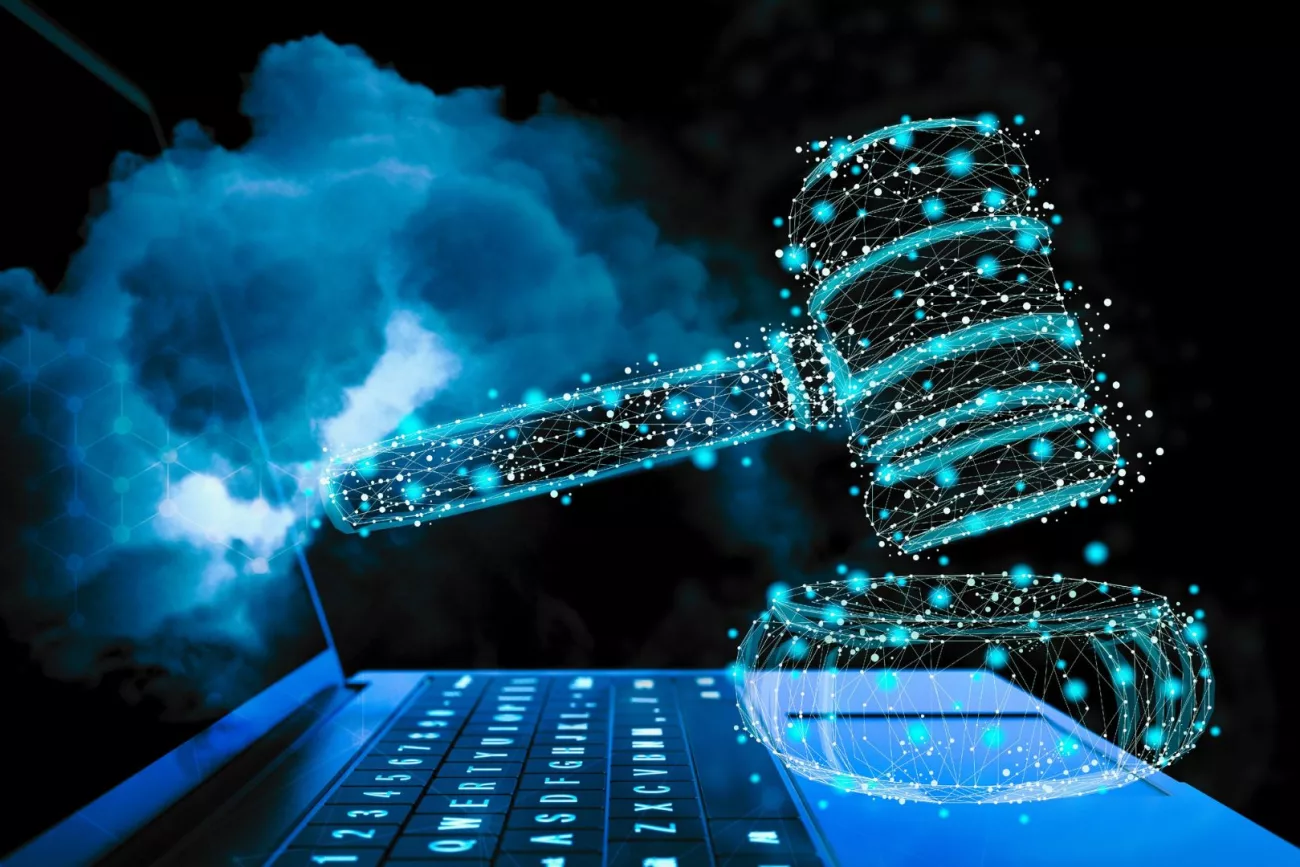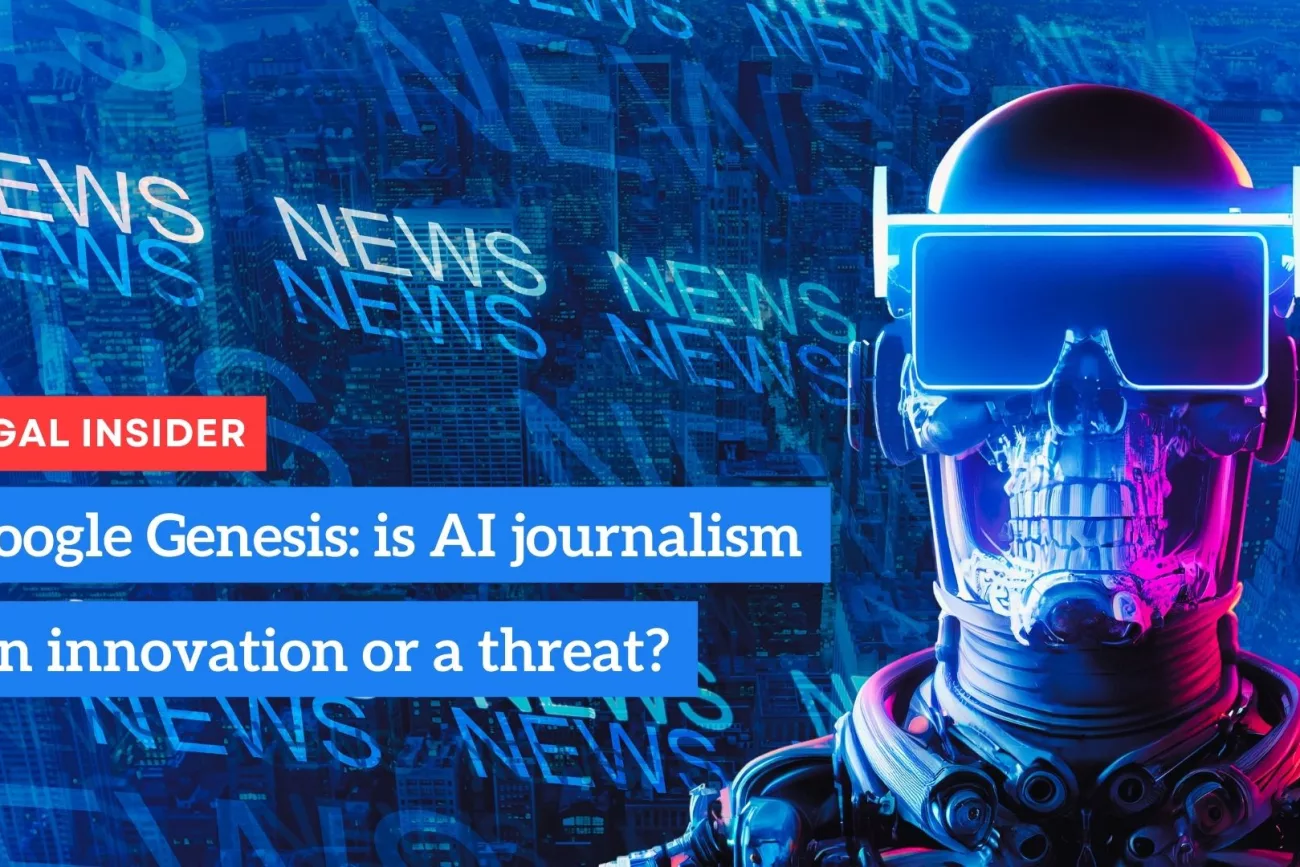
Key Points:
- AI in journalism introduces “Deep Real” for data insights but faces challenges from misleading “Deep Fakes.”
- AI-generated content raises complex intellectual property issues, from ownership to personal image rights.
- The trustworthiness of AI-driven journalism is debated, balancing potential benefits against ethical concerns.
- As AI’s role in journalism grows, it prompts legal challenges around copyright, defamation, and free speech.
Deep Dives and Deep Fakes: Journalism’s Dance with AI
In the rapidly accelerating digital age, nothing has captured the collective consciousness quite like the technological marvels of artificial intelligence. From powering Silicon Valley’s most intricate algorithms to informing Wall Street’s next billion-dollar decisions, AI’s influence is everywhere. But as this innovation stands on the cusp of revolutionizing global journalism, it also walks a fine line between advancing the pursuit of truth and distorting it.
Miri Michaeli, a voice in this vast echo chamber, alludes to the seismic shifts that the infusion of AI promises in the journalistic sphere. The emergence of ‘Deep Real’ as the antithesis to the murky world of ‘deep fakes’ is not just a fascinating juxtaposition, but a potent reminder of the power and responsibility that rests with modern-day news curators.
As we stand at the crossroads of a new era, it is crucial to dissect, discuss, and deliberate on the role of AI-driven avatars in shaping the future of news and its sanctity.
The Journalistic Tidal Wave: Deep Real vs. Deep Fake 🌊
The Bright Side: Unveiling Deep Real
Gone are the days when technological progress in journalism simply meant moving from typewriters to computers. Enter Deep Real: a refreshing blend of artificial intelligence and journalistic integrity, steering away from the low-hanging fruit of scandalous tabloid drama. Deep Real is less of the ‘Aliens Stole My Lawnmower!’ headlines and more of an AI-enhanced BBC or Reuters, providing objective, data-driven insights.
For Instance: In 2021, The Associated Press collaborated with Automated Insights to produce around 4,400 minor league baseball game recaps solely with AI, and they were largely accurate. If AI can deliver on sports news with such precision, imagine the impact Deep Real could have in reshaping hard news, investigative journalism, and expert analyses.
Fact Check: A 2020 study by the Stanford Human-AI Interaction Group indicated that journalists aided by AI tools were 60% faster at fact-checking information. Deep Real, with its reliance on vast data and algorithms, promises this speed, accuracy, and trustworthiness, elevating journalistic standards.
The Dark Alleys: The Menace of Deep Fakes
As intriguing as Deep Real’s promise is, its sinister counterpart, Deep Fakes, lurks in the digital shadows. These AI-generated fabrications are not just creating ripples but full-blown tsunamis, endangering the ethos of authentic journalism.
Real-World Deception: Remember when in 2018, a video of former President Barack Obama delivering a PSA about the dangers of deep fakes went viral? Ironically, the video was a deep fake itself, crafted meticulously by director Jordan Peele to demonstrate the grave potential of these digital illusions.
Data Speaks: A report from Sensity, a deep fake detection platform, identified over 49,000 deep fake videos online in 2020. This marked an alarming increase of 330% from the previous year. These aren’t just Hollywood gimmicks but tools that could potentially mislead voters, incite violence, or tarnish reputations in the blink of an eye.
Legal Eagle Perspective: Intellectual Property Dilemma 🦅
AI and IP: A Legal Conundrum
The intersection of artificial intelligence and intellectual property is akin to a courtroom thriller, loaded with ethical ambiguities and legal gray areas. With AI generating content, who owns the rights? The creator of the algorithm? The end-user? Or no one at all?
Case in Point: In the landmark case of Naruto v. Slater (2016), a monkey’s selfie stirred IP debates. If a non-human entity like a monkey can initiate such discourse, AI-generated content significantly complicates the IP narrative.
Statistics Say: According to the World Intellectual Property Organization (WIPO), by 2020, AI-related patent applications surged by a whopping 28% from the previous decade, indicating an urgent need for legal frameworks around AI.
Digital Avatars and Image Rights
Our AI-powered future doesn’t just challenge the written or spoken word but also the sanctity of personal image and identity. Unauthorized digital avatar use, like in the episode “Joan Is Awful,” might soon flood the courtrooms, making IP lawyers more crucial than ever.
The Hayek Predicament: Selma Hayek’s uncanny AI representation in the series Black Mirror is a clarion call. It prompts immediate discussions on how celebrities, public figures, or even the general public could have their likeness hijacked in the digital realm.
A Staggering Forecast: Legal analytics firm, Lex Machina, highlighted a 30% increase in copyright litigation in the U.S. between 2016 and 2021. With digital avatars and deep fakes gaining traction, the next decade could see this number skyrocket, making IP law an ever-evolving and immensely lucrative legal arena.
As AI’s potential unfolds in journalism and the broader digital landscape, the tango between innovation and regulation will be the dance to watch. With the waters constantly shifting, only time will tell if we’ll master the tide or be swept away.
But… Can We Trust Robo-Journalists? 🤖
Trust in the Digital Age
In the era of “fake news” allegations and the blurring lines between opinion pieces and hard news, introducing AI into journalism naturally prompts the question: Can we truly trust robo-journalists? While critics believe that AI in journalism might further erode public trust, there’s potential for a transformative change if approached with care.
Looking Back: Consider the transition from radio to television news. Skeptics worried television would sensationalize news, yet with stringent broadcasting standards, TV became a trusted news medium. Similarly, establishing rigorous guidelines for AI journalism can retain, if not enhance, the trust quotient.
Statistical Insight: A 2019 Reuters Institute study found that only 38% of the surveyed global population trusted news in general. Introducing transparent and verifiable AI methods could, paradoxically, boost these figures in the future.
Empowering Journalistic Freedom
Harnessing the potential of Deep Real means human journalists might no longer be chained to their desks rewriting press releases or covering repetitive events. They can embark on intricate investigative missions, shedding light on obscured truths and offering in-depth analysis.
Case Spotlight: The Washington Post’s Heliograf software was used to cover the Rio Olympics in 2016, churning out short reports, scores, and updates. This freed human reporters to cover athlete profiles, corruption stories, and cultural pieces – stories with depth and soul.
Legal Implications: As journalists gain the freedom to push boundaries, so will legal challenges intensify, especially around sources’ protection, whistleblowers, and the right to information.
Ethics on Trial: AI Journalistic Integrity ⚖️
The AI Ethical Pledge
In journalism, whether driven by humans or machines, the guiding star remains unchanged: unwavering commitment to transparency, integrity, and the public’s right to information. AI journalism isn’t just about mimicking human journalists but upholding these cardinal principles.
Drawing Parallels: Much like how lawyers swear by the code of professional responsibility, AI journalism systems must have an inherent ethical code, focusing on truth, fairness, and impartiality.
Data Point: In 2020, the AI Ethics Guidelines Global Inventory reported that over 160 organizations globally were involved in drafting AI ethical guidelines. This underscores the collective endeavor to ensure AI aligns with humanity’s highest values.
Navigating Accountability in the Digital Newsroom
The era of AI journalism ushers in new quandaries: If an AI system publishes inaccurate or harmful information, who stands accountable? The algorithm developers? The news agency? Or the AI itself?
Legal Precedent: The European Union’s General Data Protection Regulation (GDPR) sets a precedent by emphasizing “right to explanation.” This means that entities employing algorithms that affect individuals must offer clear explanations for decisions made by the algorithms.
Recent Development: The City of San Francisco in 2019 became the first to ban government agencies’ use of facial recognition technology, citing concerns over surveillance and potential misuse. This legal stance foreshadows the intricate dance between technology, ethics, and law that the world will increasingly witness.
As AI continues to weave into the fabric of journalism, it’s crucial to remember that at its core, journalism serves the public interest. Whether penned by human hands or computed algorithms, the sanctity of truthful, transparent, and tenacious reporting must remain sacrosanct.
AI Journalism: A Threat or Boon? 🌐
Navigating The AI Journalism Landscape
In the fast-paced world of journalism, the introduction of AI tools like ChatGPT heralds both excitement and caution. Their potential for efficiency is counterbalanced by challenges in maintaining quality and originality.
CNET’s Foray into AI Journalism: CNET, a leader in tech journalism, took a bold step by experimenting with AI-generated articles. The promise? Quick turnarounds and automation of data-heavy stories. The reality? The experiment unveiled a slew of challenges – from factual inaccuracies to allegations of inadvertent plagiarism. It’s a stark reminder that while AI tools can process vast amounts of data quickly, nuances, context, and narrative coherence can sometimes elude them.
Buzzfeed’s Trendsetting Initiative: Always a step ahead in digital content, Buzzfeed has been dabbling in AI to augment their already popular online quizzes. It might seem inconsequential to use advanced tech for quizzes, but it’s indicative of a larger trend. If AI can be employed even in lighter, entertainment-driven content, its potential reach across other segments is immense.
The Million-Dollar Question 💰
Future of Professions in the Age of AI
The wave of AI, undoubtedly, brings to fore the perennial question: Will machines replace us? Be it journalists or attorneys, the concern is palpable.
Trend Analysis: The World Economic Forum, in its “Future of Jobs Report 2020”, projected that by 2025, the time spent on current tasks at work by humans and machines would be equal. However, it’s also expected that 12 million new roles could emerge in the same timeframe.
AI in Journalism: While AI tools can automate repetitive tasks (think stock market updates or sports scores), they’re yet to replicate the nuanced, emotional storytelling of seasoned journalists. The essence of a heart-wrenching human interest story, the depth of investigative journalism, or the critical thinking in an op-ed largely remain human domains.
Legal Ramifications: In the legal realm, AI might assist in document reviews or predict case outcomes based on precedent. However, the intricate dance of courtroom arguments, negotiation tactics, or the ethical considerations of a tough case demand a uniquely human touch.
AI’s Presence and Influence
The era of AI journalism is in its infancy, but its trajectory is unmistakable. The challenge and opportunity lie in its thoughtful integration. Strict regulations, ethical standards, and an unwavering commitment to truth and transparency will define its success.
SEO Insights: As of the last data available in 2021, AI-generated content hasn’t surpassed human-written pieces in Google search results. Yet, as AI evolves, so will its capabilities. It’s not beyond the realm of possibility for AI content to rank higher in the future, especially for data-driven or factual content.
In the end, the coexistence of AI with human professionals is not about replacement but augmentation. It’s about harnessing the strengths of both entities to create a more informed, efficient, and vibrant world.
🔥 Hot Take: AI Journalism’s Legal Implications
Journeying through AI’s Legal Labyrinth
While the digital age has always presented legal challenges, the rise of AI in journalism is an unparalleled phenomenon, pushing boundaries and prompting new debates around our established legal norms.
Intellectual Property Woes: Consider the following: if an AI algorithm “writes” a piece, who owns the copyright? Traditional IP law centers on human authorship, making AI-generated content a gray area. The U.S. Copyright Office, as of 2021, maintains that it will register an original work of authorship only if created by a human being. The entrance of AI into this space demands a potential reevaluation of these long-held principles.
The Defamation Dilemma: Picture this – an AI tool, drawing from massive datasets, publishes a piece inadvertently tarnishing an individual’s reputation. Who’s liable? The developers? The news agency using the tool? Or is it dismissed because the “author” lacks intent?
Free Speech Conundrum: The First Amendment protects free speech, but how does this translate when the “speaker” is a machine? Are AI utterances protected? Or can they be regulated without infringing on constitutional rights?
🚀 Ignite the Debate!
AI Journalism: A New Frontier in Legal Debates
The intersection of AI and journalism isn’t just technological; it sparks heated debates on the very nature and purpose of journalism and the laws that surround it.
Legal Frameworks in Flux: As AI journalism emerges as a dominant force, there’s a pressing need to redefine or, at the least, refine existing legal frameworks. The EU’s General Data Protection Regulation (GDPR), for instance, provides individuals the right not to be subject to decisions based solely on automated processing. Could similar guidelines shape the future of AI journalism?
Algorithmic Accountability: Do we trust algorithms to dictate our news consumption? These aren’t just systems processing numbers; they’re shaping opinions, influencing elections, and more. Ensuring transparency in their functioning becomes paramount.
Advocacy in the Age of AI: For legal professionals, the challenges AI presents are twofold: not only understanding the tech itself but navigating its implications for journalism – an institution integral to democracies worldwide.
💌 Stay Ahead of the Curve!
Stay Informed, Stay Relevant
The confluence of technology and law has never been more dynamic or more critical. For those keen on staying at the forefront of this exciting juncture:
👉 Join our Newsletter! Be part of a community that delves into weekly insights, vibrant debates, and the ever-evolving legal challenges posed by groundbreaking technological advancements. Stay sharp, stay curious, and be a beacon in the legal-tech nexus. 🌟
Share this post
Frequently Asked Questions (FAQs)
Q: What is 'Deep Real' in journalism?
A: Deep Real is a blend of artificial intelligence and journalistic integrity, focusing on objective, data-driven insights rather than sensationalism.
Q: How prevalent are 'deep fakes' in the media?
A: In 2020, Sensity identified over 49,000 deep fake videos online, a 330% increase from the previous year, posing threats to journalistic authenticity.
Q: How does AI impact intellectual property in journalism?
A: The rise of AI-generated content brings forward the dilemma of ownership. Traditional IP laws center on human authorship, making AI’s role a gray area.
Q: Can robo-journalists be trusted?
A: Like TV transitioning from radio, stringent guidelines for AI journalism can establish trust. Transparency and verifiable methods are key.
Q: Will AI replace human journalists?
A: AI’s role is seen more as augmentation than replacement. While automating repetitive tasks, nuanced storytelling and critical thinking remain human domains.














